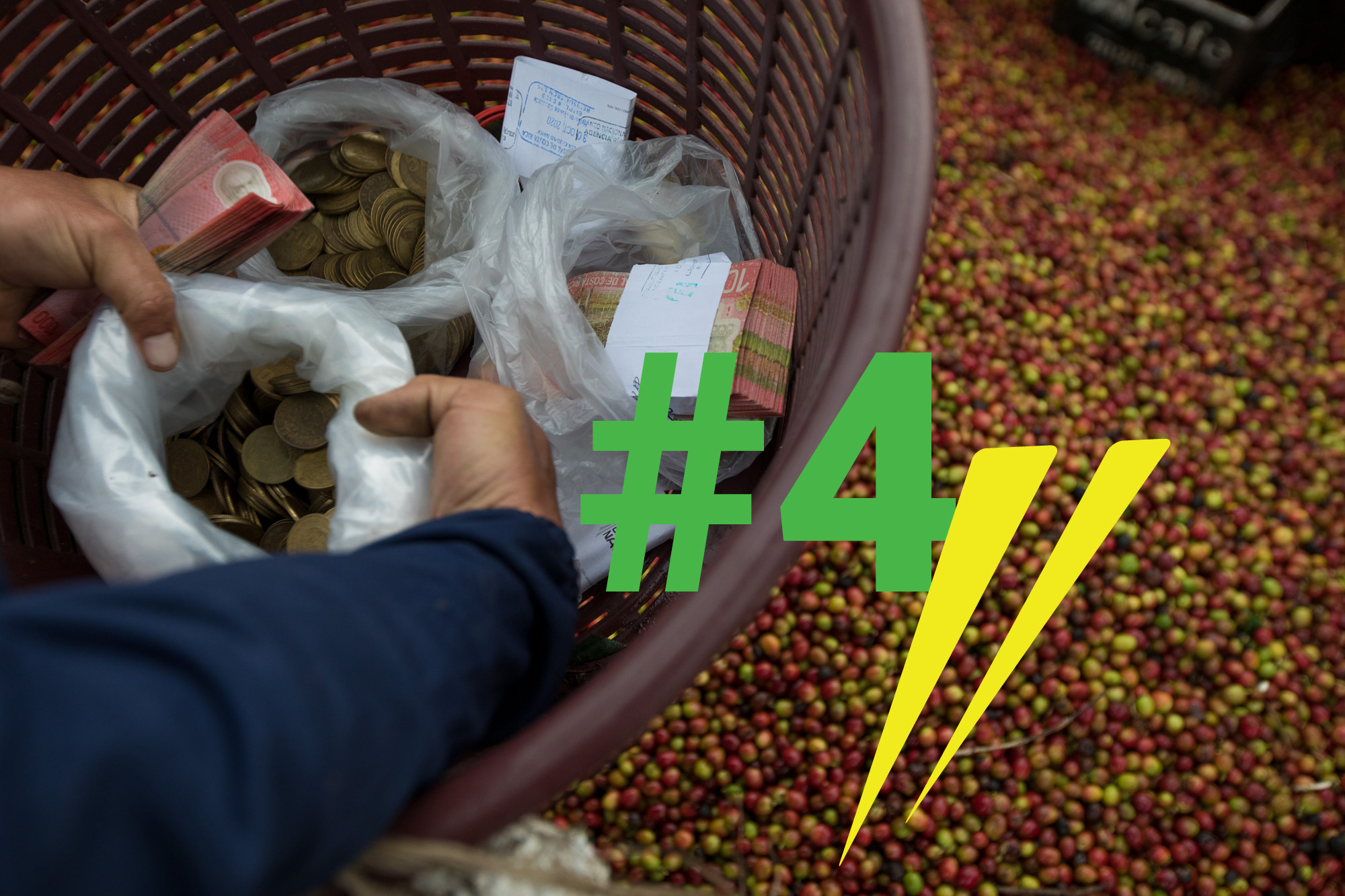
Read Part I, “A harvest turned upside down,” Part II, “The 48-hour journey,” and Part III, “Second home in a strange land.”
It’s the moment when everything stops, and everything converges.
The sound of an engine and wheels on gravel draws them out, their figures appearing as if by magic from among seas of green leaves. Sometimes they’ve been waiting, sitting along the edge of the dirt road in their jeans and botas de hule, traditional Ngöbe dresses and leggings, black plastic garbage bags across their shoulders to protect from rain or shucked to the side under a hot sun. If they’re still picking, like students cramming before a test, the truck’s arrival puts an end to the day’s work.
Faces ring the vehicle. So many things are the same from farm to farm, no matter the region, no matter the size: the 50-kg woven plastic bags in which the coffee cherries have been stored that day by the pickers. The plastic baskets, or cajuelas, once made of natural fibers but now of plastic, that have been worn around the waist of the picker all day, but that now are hoisted up for the person in charge of this medida to measure. The sound of the coffee cherries on wood, getting quieter as the truckbed fills up.
The differences are in the little things. At Finca Río Negro in Coto Brus, which can house up to 850 workers in a usual year, there’s the sheer quantity of the pickers, dozens and dozens who descend upon the truck from three directions, large dirt roads that meet in a Y; the coffee fruits fill up the truckbed where we stand so quickly that we have to remember to move our boot-clad legs to avoid getting stuck under the avalanche. There, coins are slung into the empty cajuelas to replace the coffee that was just measured out.
At nearby Finca La China, a maze of administrators maneuver through back roads under the rain to meet groups of workers in different sectors on gentle slopes overlooking Panama. Manager Marco Cerdas drives back to headquarters and pauses so a group of workers can hop onto the back of his truck, all en route to the company pulpería. At small farms in Los Santos like the one belonging to Lucidia Hernández and Minor Montero, no money is exchanged: each worker’s harvest for the day is marked down carefully in a little notebook, to be paid later.
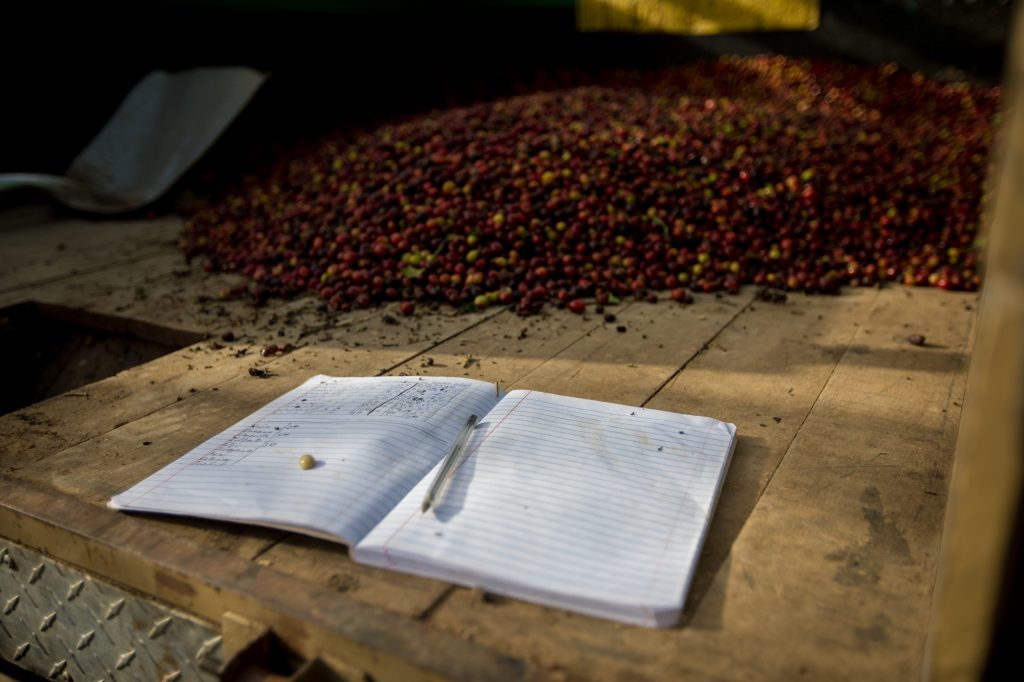
From farm to farm, no matter the size, the medida is the moment when the economy of the coffee field is on full display. It’s a ritual we witness day after day, on gently curving hills in Coto Brus and jaw-dropping mountain inclines in Los Santos.
It’s a process that always leaves us with the same question, as we watch the count, the exchange of tokens or coins or the pencil-marked lines in a book: how does anyone make this work?
The coffee picker
Imagine that you’re filling a basket of coffee strapped to your waist as you stand on a 60-degree incline at nearly 4,000 feet above sea level. You’re painstakingly finding the ripest, reddest coffee cherries among the green, navigating among tight rows of coffee plants, keeping your rubber boots securely planted on rocky, pebbly soil. As you do it, two journalists pepper you with questions about how much you paid for the mattress you bought upon your arrival in Costa Rica to sleep on at night, or how a taxi costs when you need to go into town, or how much you might save up at the end of the season to take back to Panama with you. These women seem kindly enough, but they are clearly having trouble keeping themselves upright, and have a bizarre obsession with the workings of your household. You answer their questions patiently and allow your amusement to flicker across your face here and there.
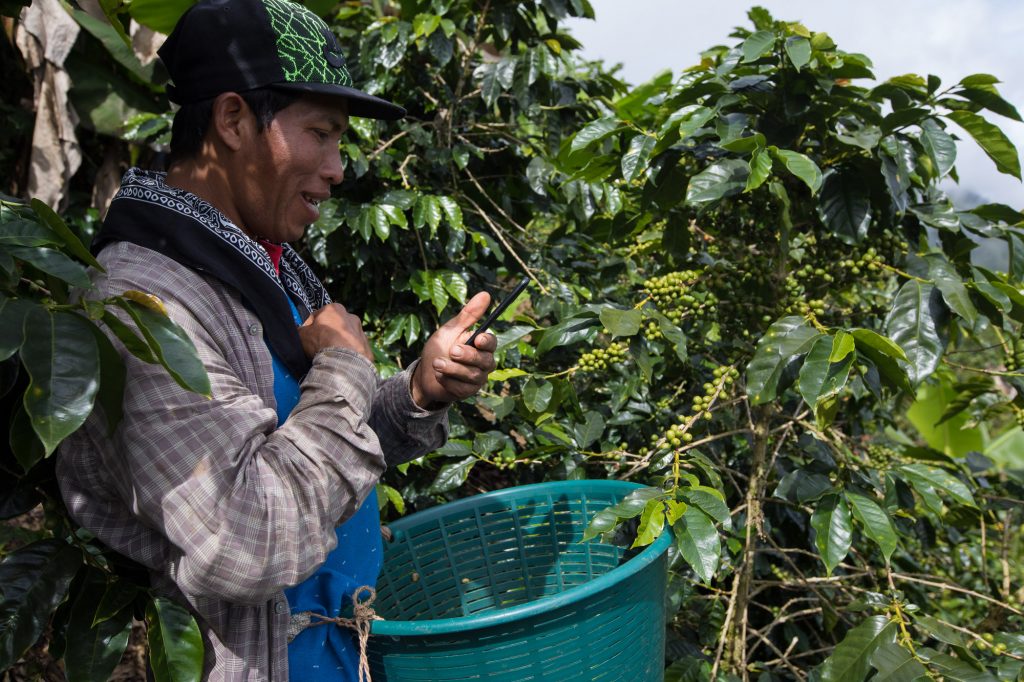
The fact is, it takes a lot of detailed questions to understand how Máximo Palacios and his family, or any of the Ngöbe families we meet, make the coffee harvest work for them economically. “Costa Ricans are no good for picking coffee anymore,” we’re told in interview after interview, at farm after farm, or “They just don’t want to.” What Máximo and the other Ngöbe workers help us to see, gradually, is that the reason for this is not just the price paid per cajuela, or the working conditions. It’s that the coffee harvest works for the Ngöbe because many of them live in a subsistence economy. Cash is not at the center of their lives: it fills in the gaps that allow them to grow and harvest their own food for their family’s consumption, during all the months they’re not in Costa Rica each year.
Máximo, who traveled 48 hours to reach this farm on the side of this mountain in Los Santos, about an hour and a half south of Costa Rica’s capital, recounts his expenditures and income. The transportation from the border to San Lorenzo, the nearest town, costs 150,000 colones (about $245) for the six of them, he says.
Once they’ve arrived at their simple house high in the coffee field, he has to outfit their bunks with mattresses and blankets. While it surprises us initially to see a bache, or workers’ dormitory, waiting for workers with bare wooden bunks, farmer after farmer explains that this is just how it’s done. This way, they say, workers can buy the bedding they prefer in nearby towns and take it back to Panama with them when they’re done. (Lucidia, of Tierra Amiga, mentions that her group of workers arrived so late at night that she pulled most of the blankets out of her house to outfit their beds until they had a chance to arrange their own bedding.)
The goal of the workers’ stay in Costa Rica, Máximo gradually explains, is all about stockpiling anyway. It is with their coffee earnings each year that the family buys, here in Costa Rica or in Panama on their way back home, things like rubber boots and jeans that they’ll need back home in the comarca, the indigenous territory in Panama where they live. It is with the savings they take home with them that they’ll grease the wheels of their household economy: they grow their own corn, yucca and even a little coffee at their wooden house in the woods back home, but other products or any equipment they need for their farm, they’ll need to buy.
Coffee pickers at small farms like this and living inside the coffee field make their own schedule. The medida is the only fixed point in the day: on this day, a Saturday, it takes place at 12:40 pm, and on a normal day it’s around 4 or 5 pm, with no medida on Sunday. However, Máximo, 39, his wife Élida, and their daughters—Ílda, 20, and teenagers Ofelia, Yorlinda and Liliana—spend as much time as possible doing what they came to do. They leave their house at dawn and walk about 40 minutes up and down steep mountain paths to reach the sector of the farm they’re working on at any given time. On Sundays, their day off, they sometimes choose to spend some time picking coffee and include it in the following day’s harvest.
After picking all day, every day, for four months or so, the family might take savings of $900 back to Panama in March or April. After a very good harvest, it might be $1,000 or even $1,500. However, that money has usually all but disappeared by the time the family has crossed northern Panama and reached their home; Máximo pays off any debts the family has as they go, he says, so that they can live free and clear, eating what they raise.
On this day at the coffee field in November, the Palacios family are still picking en granea. They make more per cajuela at that time, when only part of the coffee cherries are ripe, than they do at the height of the harvest, because the work is more painstaking. In general terms, Costa Rican coffee ripens from south to north, which is why some pickers begin the harvest in Coto Brus in October and move up to Los Santos or even beyond as the coffee ripens. However, the subtleties of ripeness and yield from farm to farm, or even between areas on the same farm, are vast.
The workers know it—and, according to some farmers, coffee farm owners who are not complying with this year’s COVID-19 regulations use that fact to convince workers to leave their assigned farms and switch to another. Phone calls and WhatsApp messages fly among the farms. Farmers will tell workers that their crop is riper than where they’re picking, that they’ll earn faster. Some, according to Marco Cerdas at Finca La China, have even been known to offer bonuses if farmers will come work for them.
In a year when both farmers and migrants have gone through a lot just to get to this point, there’s a lot at stake. Migrants have to make sure their time in Costa Rica, time on which the whole rest of their year depends, is worthwhile financially. Farmers have invested time and money, sometimes days of border trips and organization and paperwork, to get the migrants into the country.
When workers leave unannounced, it’s a bitter pill to swallow.
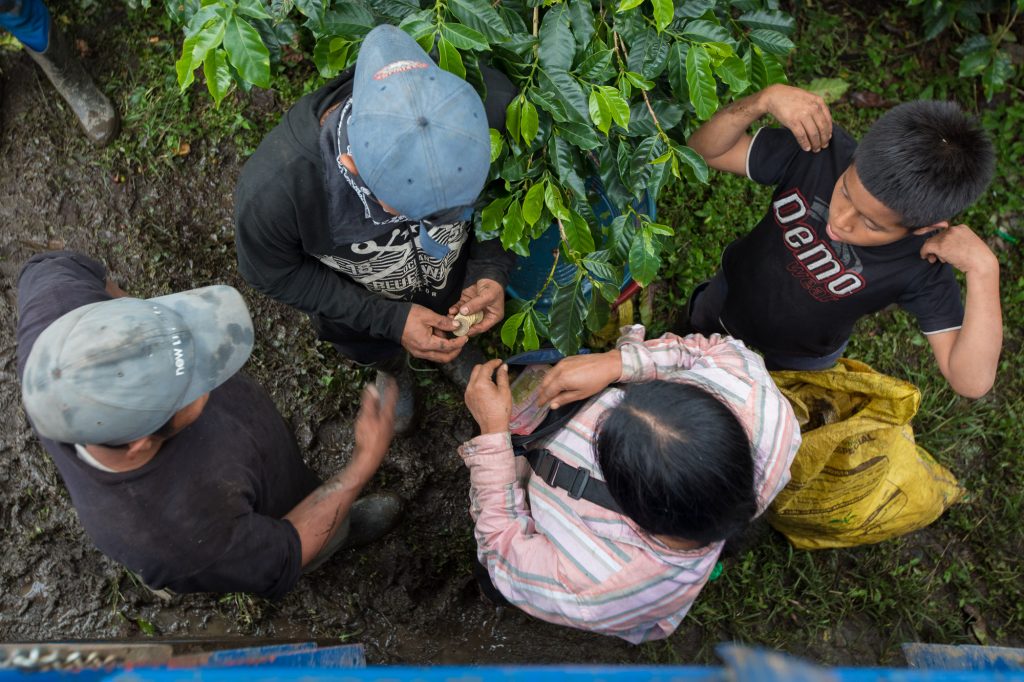
The farmer
Lucidia Hérnandez and her husband, Minor Montero, kind of saw it coming. Two of the 13 Ngöbe workers they had sponsored for migration to Costa Rica this year, the extended family united coordinated by foreman Johnny and living at the new dormitory at the farm, started asking for their papers. These were the documents that resulted from Minor’s trip to the border, five or six hours to the south, and weeks of coordination. Like most farmers, Lucidia and Minor coordinate their worker pool through a point man: in this case, Johnny Saldaña Montezuma, 48, who organized the group of 13 relatives. (People like Johnny, always important to a farmer, have become absolutely essential in 2020 when workers had to be recruited and paperwork filed before a border crossing could even be contemplated.)
Minor Montero says he told the two workers, “I know why you’re asking for them.” Still, the two men left, moving on to some other farm. Minor says he figures some other farmer told them about a better, more lucrative harvest.
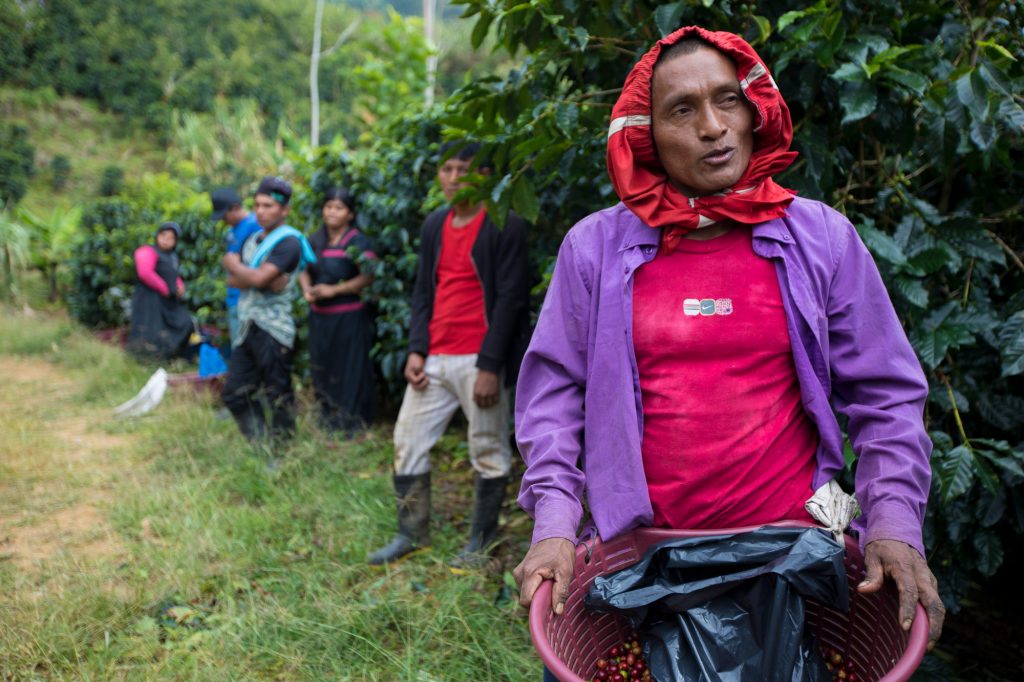
It’s the workers’ right to move on, of course, or simply to go home: Immigration Sub-Director Daguer Hernández tells us about two young men from Nicaragua who, shortly upon arrival at the farm where they were hired in Costa Rica, report being homesick and ask to be sent home. In a normal year, they would simply leave. In 2020, however, when their tickets to Costa Rica had to be pre-paid by the farmer and coordinated at the highest levels of the two countries’ immigration, health and other departments, their return involves a series of calls between Hernández and his Nicaraguan counterpart from their offices in the nations’ capitals.
But these changes, especially during a pandemic, leave farmers scrambling. They can also leave them in debt: because Minor and Lucidia, to comply with health authorities’ request that workers leave their farms as little as possible, buy food and supplies for their workers and balance it against the workers’ coffee income, these two workers owed the farm owners approximately 30,000 colones each when they left (about $50), as well as an account of 10,000 colones (about $16) to a local pulpero, or general store owner. One of the young men left behind his partner, a woman who has now been taken on by the group, Minor says.
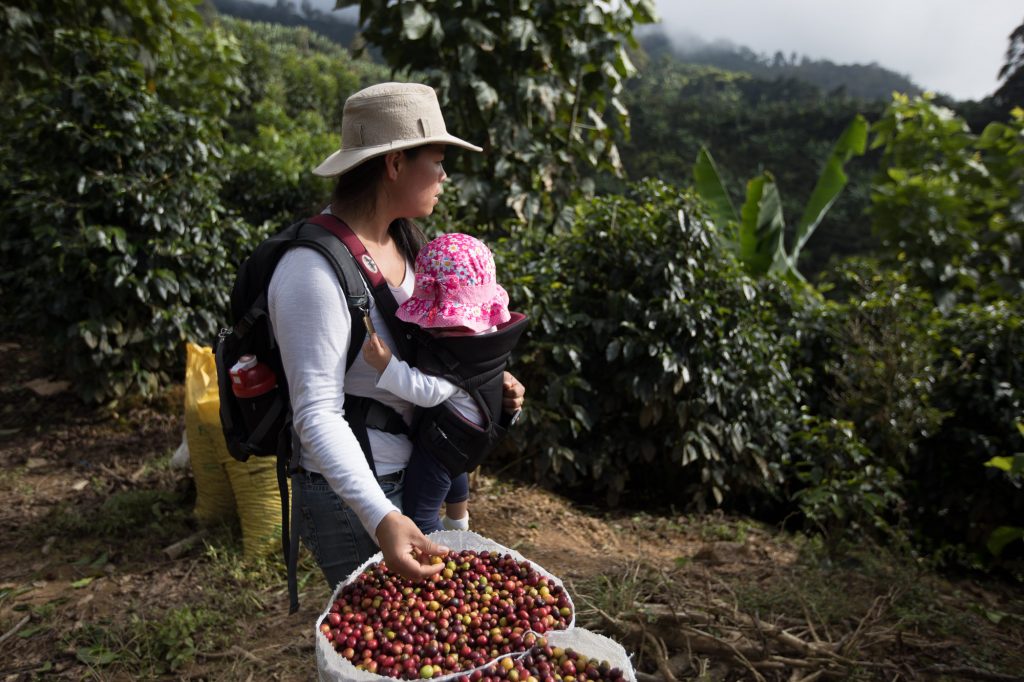
A debt of more than $100 and the loss of 15% of the workforce at the height of the harvest is a heavy blow. Far from the image some in San José might have of the lifestyle of a coffee farmer, involving a vast estate and shiny, roaring pickup trucks, Lucidia, Minor, and their baby daughter Ruth live very simply in their home in San Marcos. They’ve carefully rigged up a hand-washing station at the entrance, using a broken umbrella to shield the washer in case it’s raining. A pleasant outdoor area, roofed with a packed dirt floor, holds rocking chairs and a wood stove where they can serve coffee or food; this is the area where they hold tastings with tourists interested in their organic coffee, when there isn’t a global pandemic raging. Lucidia has the bustling air of a Costa Rican grandmother who can’t stand the idea that anyone in her house is hungry. She whips up traditional Costa Rican snacks for her visitors, tortillas con queso and salty plantain chips.
Small farmers make up the vast majority of Costa Rica coffee growers. Data from the Costa Rican Coffee Institute shows that 86% of farms produce fewer than 100 bushels, or fanegas, a year. However, Minor argues that in another respect, he thinks they are in the minority: he says that not many small farmers have complied with government regulations for mid-pandemic coffee worker migration, as he and Lucidia have. For him, the solution to problems like his—the “poaching” of workers by farmers who have not gone to the trouble and expense to bring them into the country—is for the regulations implemented this year to scale up, not down. For more farms to be held accountable. A tracing system that takes into account debts owed so that farmers who take on workers also take responsibility for unpaid debts and responsibilities before the government.
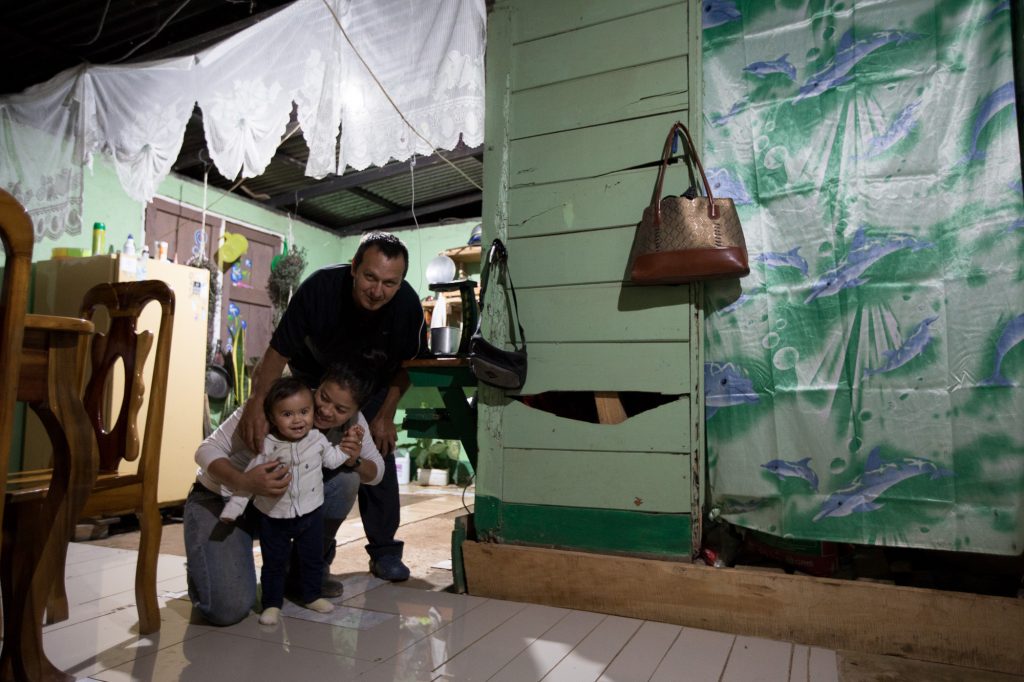
Marco Cerdas, at Finca La China in Coto Brus, agrees. In a followup interview by phone in January, he says that he’s lost 15% of his workforce to other farms after coordinating the legal entry of those workers into the country. According to Marco, some farmers even hired indigenous people to scout out workers from other farms and encourage them to jump ship. In general, he says, the workers don’t let the administrator know: one morning, they’re simply gone.
Like Minor, Marco says he’d like to see increased government oversight to prevent other farms from flouting labor and immigration laws, as well as, this year, health requirements. But he thinks it’s unlikely.
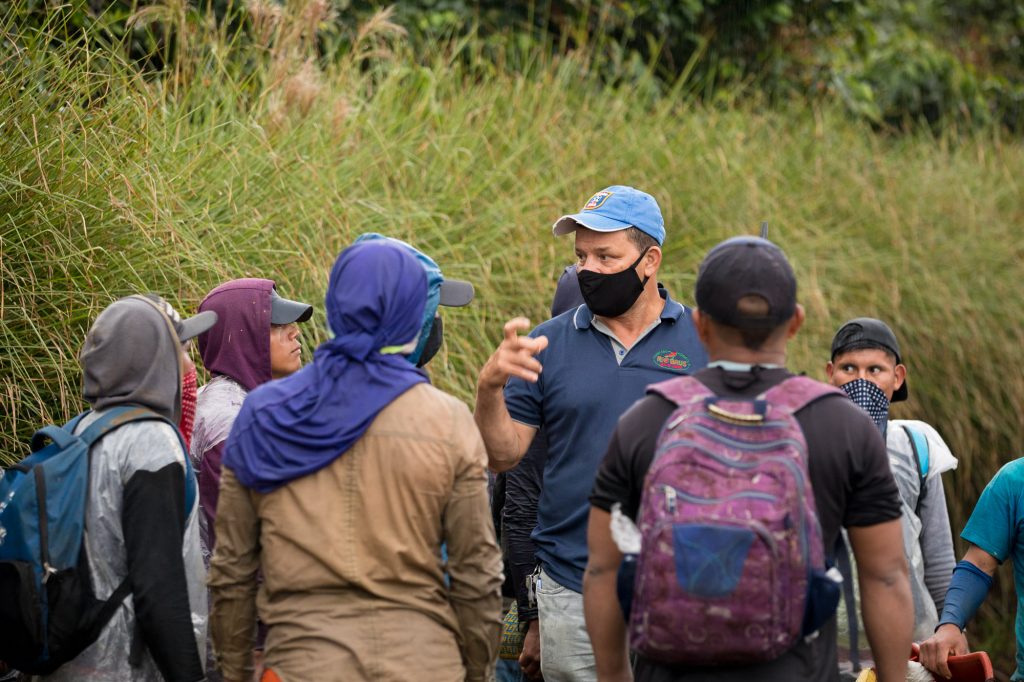
“The people who are doing the inspections don’t have the capacity to respond. There’s no staff to cover so many farmers, so much ground, so many problems,” he says. “I’ll be honest with you: I do feel that many farmers couldn’t comply. That’s my opinion. I can’t prove it… but it’s so much work to bring the people, and expensive. Small farmers can’t handle it. How much does the trip cost (to the border)? How much is a (lost) day of work worth to them?”
The value of a hectare
The question is not only how small farmers manage the demands of the pandemic’s migratory requirements on their time and their wallets. The question is how they manage to survive at all. To be financially sustainable, a coffee farm must produce more than 35 fanegas, or bushels, per hectare, but most farmers produce less.
Nelson Mejía is one such farmer. His four-hectare farm in Coto Brus, Finca La Frontera, produces about 100 bushels last year, or 25 per hectare, and says he fetches 30,000 colones per bushel. That means the farm generates 3 million colones per year, or about $4,800. Divide that by 12 and Nelson’s earning more or less Costa Rica’s minimum wage… except for one thing. From those funds, he has to pay his workers and maintain the farm.
How does he make ends meet? He doesn’t. His wife is the principal of the local primary school. Nelson, 42, does some plantain farming, and rents some apartments in Heredia, in the Central Valley. Otherwise, Finca La Frontera wouldn’t be able to carry on. Like other farms visible from where we stand, Nelson’s farm would have to be clear-cut and used for cattle, which is often the fate of coffee farms that go under.
He gives the interview while his son Eduardo, 8, leans comfortably against his father, playing with his hand. They both wear rubber boots. Nelson, 42, grew up picking coffee for his father on this land, earning 10 colones a cajuela, about 120 colones in a week. He wants the farm to succeed.
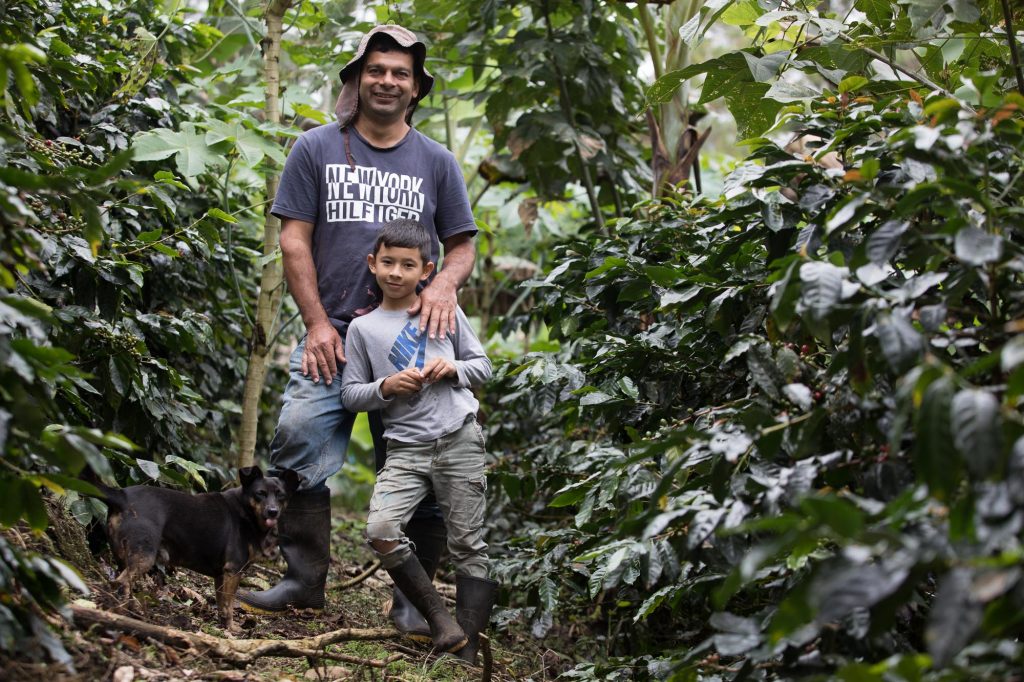
Monica Quesada Cordero/El Colectivo 506/National Geographic Society Covid-19 Emergency Fund
Minor, up in Los Santos, tells a similar story. He says that the only way to stay afloat is the local ecosystem, like the hardware store that made them a loan of the materials they needed so they could build their workers’ shelter this past year.
“At the bank, the process is so tough that you have to be cleaner than the President of the Republic,” he says.
Oscar Castro, the manager at Finca Río Negro, says he’d like to see more professional development and proactivity in the country’s coffee industry. He points out that ICAFE offers free soil analysis that many producers don’t take advantage of, and that too many farmers don’t take basic steps like replacing their coffee plants every 20 years. At the same time, the institute has only three agronomists for all of Coto Brus with its 3,000 farms, which Oscar says is not enough.
“We lack direction,” he says of the industry.
“This is an expensive country,” says Xinia Chaves, executive director of ICAFE. “The coffee yield… is an essential point for profitability.” She points out that while the pandemic has posed an enormous challenge for the industry, it was already reeling in the face of an epidemic of its own: the spread of coffee rust, which has caused a whopping 6,000 coffee producers to leave the industry. Her institution is promoting a traceability initiative and an app called CR-CAFE that seeks monitoring of every step in the coffee value chain in order to improve profitability over time. For ICAFE and the rest of the industry, the massive challenges of 2020 were only one obstacle of many.
A lot rides on the future of these efforts, from national programs like CR-CAFE to the decisions that Nelson Mejía takes about his four hectares. Up and down the country, knee-deep in mud at the cafetal or seated at a computer for a Zoom call, people in Costa Rica talk to us about coffee as a distributive force, a generator of income for people of all walks of life, not just a few. In Costa Rica in 2020, that is true not only of the coffee farms themselves, but also of the coffee migration, generating income for bus drivers, Ngöbe-Buglé Cultural Advisors, organizers like Johnny. And then there are restaurants, cafés, hardware stores, clothing shops and more, all catering to coffee farmers, the people who come to pick their fruits, and the tourists who come to sample the result.
At the medida con Máximo, the numbers are in: his family has picked 22 cajuelas today, a half day, for a total of about $43. A soft rain begins to fall as they start making their way down the hill.
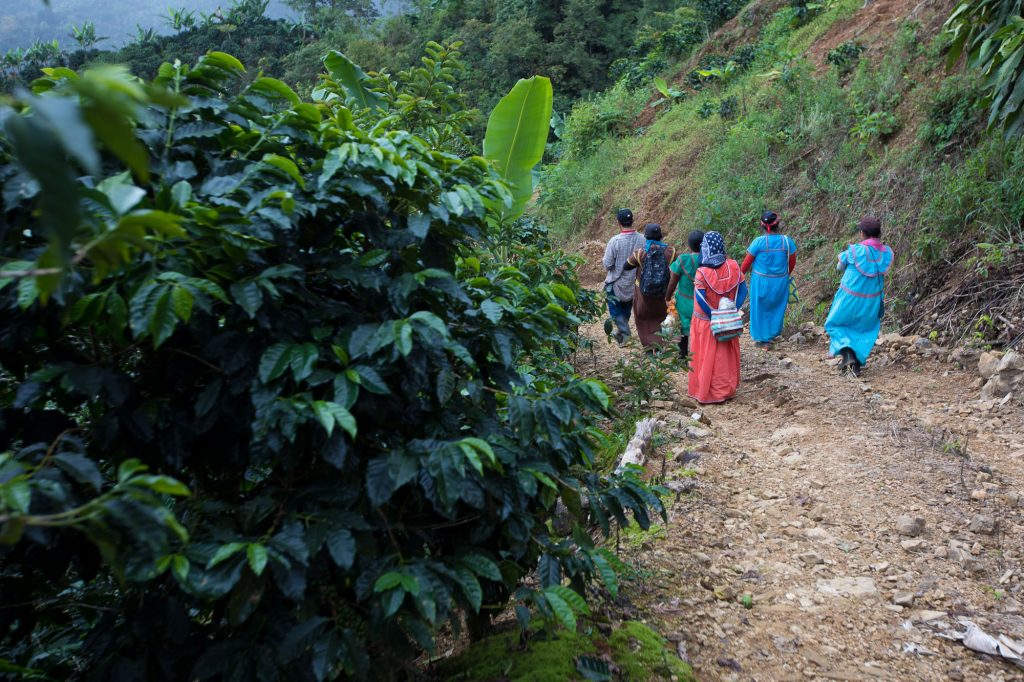
Marcos Blanco Fallas, a relative of the owner of this farm, is among the men presiding at this medida. He talks through the ups and downs of this year’s unusual harvest. As with so many conversations in Los Santos, where, if you’re at any height, San Marcos and Santa María and San Pablo and the rest of the cities and towns of the valley are laid out in front of you, this one is illustrated by gestures out towards the vastness. (Ask someone in Los Santos where he’s from, or for her life story, and the person will probably point out towards one Saint, then another.)
Finally, he sweeps out his arm to indicate the whole landscape and says, “When you really look, it’s all made of coffee.”
As we were to learn, whole lives can be made of coffee, too.
Next in the series: Picking coffee can change your life. Four stories show how.


